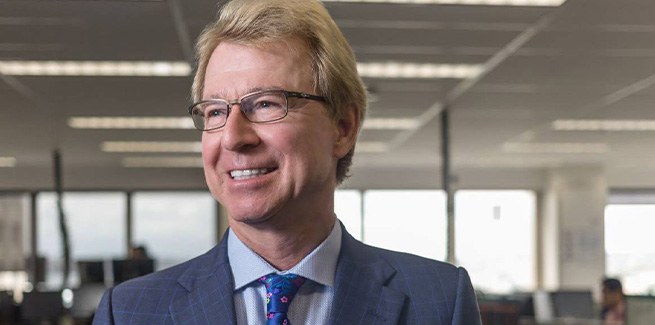
The impact to home owners’ wealth from tumbling property prices should limit how much the Reserve Bank jacks up rates, according to AMP’s chief economist.
AMP chief economist and head of investment strategy Shane Oliver has outlined his expectations for how higher interest rates will shape house prices, in a new analysis.
AMP has projected that house prices will fall by around 10 to 15 per cent over the next two years, as a result of deteriorating affordability and rising interest rates.
Average home prices are tipped to grow by 1 per cent during 2022, before a 5 to 10 per cent decline in 2023 and a further a 10 to 15 per cent dive in 2024, which would take average prices back to the levels of March or April 2021.
Meanwhile, the Reserve Bank is expected to start hiking rates in June, with AMP estimating the move will push up variable mortgage rates up by nearly 1 per cent by the end of the year and by 1.5 per cent mid-2023.
Similarly, Reserve Bank of Australia (RBA) released modelling last week, estimating that a 2 per cent rise in interest rates over a two-year period could see house prices drop by as much as 15 per cent.
This would contrast to a 22 per cent national average home price rise through 2021, the fastest annual ascent since 1989.
Dr Oliver noted a housing cash, defined as prices falling by 25 per cent or so, could be possible but called it unlikely, unless the RBA pursued “aggressive rate hikes”.
“The RBA will only raise rates as far as necessary to cool inflation. It knows that high household debt levels compared to the past mean that the household sector is more sensitive to higher rates and therefore it won’t need to raise rates as much as in the past to cool spending and hence, inflation,” the note from Dr Oliver stated.
“So it won’t be on autopilot mindlessly hiking and crashing the property market.”
Dr Oliver believes the negative wealth effect from house prices would “do some of the RBA’s work for it”, leading the central bank to pause tightening its monetary policy next year, when the cash rate could be at around 1.5 per cent. This in turn should limit the fall in house prices to around 10 to 15 per cent.
Further, Dr Oliver has estimated that a 1.5 per cent to 2 per cent rise in mortgage rates would reduce home-buyer borrowing power and the ability to pay for a house by 10 to 15 per cent.
Dampened affordability, inflation also dragging prices
Looking at the year ahead, AMP has tipped national average property prices will peak around mid-2022, before entering a cyclical downswing. A number of factors are expected to have contributed.
Property value growth has surged far ahead of household incomes, with Dr Oliver tracking a 358 per cent rise in dwelling prices over the last 25 years, versus a 113 per cent increase in wages.
Further, higher inflation, more supply on market as vendors look to take advantage of high prices and a decline in home-buyer confidence have contributed to the price slowdown that has commenced.
But the major driver, Dr Oliver said, will be the rise of interest rates – particularly with the uptick of fixed-rate lending during the reign of the record low rate of 0.1 per cent.
“Normally fixed rate lending was around 15 per cent of new home lending, but over the last 18 months or so it was around 40 per cent as borrowers took advantage of sub 2 per cent fixed mortgage rates,” the economist noted.
“But now fixed rates are up sharply which is taking the edge off new buyer demand well ahead of RBA hikes.”
Currently, the unfolding downfall is tipped to be another cyclical downswing, rather than the end of the current 25-year housing boom.
But Dr Oliver has warned the market is likely to come under pressure in the years ahead, as the 30-year declining trend in mortgage rates from 17 per cent in 1989 to 2 per cent last year will come to a grinding halt.
However a change of government is also unlikely to switch up the outlook, he concluded.
“Unlike in 2019 when the ALP’s policy was to limit negative gearing and raise capital gains tax, which modelling indicated could reduce property prices by 2 per cent to 9 per cent, this time around the policy differences with respect to property between the ALP and the Coalition are minor,” Dr Oliver said.
CoreLogic recently reported that house price drops during the March quarter were being led by high-end and inner-city suburbs across Melbourne and Sydney.
[Related: Eyes on the election]
